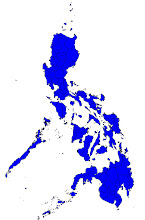http://opinion.inquirer.net/inquireropinion/editorial/view/20100122-248912/Figures-that-matter
MANILA, Philippines--Perhaps stung by the continuing plunge in President Macapagal-Arroyo’s public approval rating or, more likely, to give a boost to administration candidate Gilbert Teodoro’s foundering campaign for the presidency, the administration has flooded the mass media with ads touting its major accomplishments, particularly in the economic arena. The ads pointedly compare the achievements of the Arroyo administration with those of her three immediate predecessors—Presidents Corazon Aquino, Fidel V. Ramos and Joseph Estrada—and unabashedly claim that Filipinos now enjoy “better lives.”
By themselves, the figures look impressive: more roads built, more jobs created, more barangays electrified, more classrooms built and textbooks distributed, even more cell phones sold to consumers. But they don’t provide a complete picture of where Filipinos are today. These ads either omit some key data or present other statistics in a way that would make the administration look better. For instance, the ads point out that average growth in the Gross Domestic Product from 2001 to 2008 averaged 4.86 percent, higher than the 3.3 percent growth under Aquino, 3.6 percent under Ramos and 4.7 percent under Estrada. But why was the dismal 0.7 percent GDP growth in 2009 left out in computing the average? Because 2009 was an abnormal year, since the world was in recession? But the Ramos years also saw the Asian financial crisis of 1997 gutting the Philippine economy, so why was that period not taken out in computing the average GDP growth during the Ramos administration? One reason for leaving out last year’s GDP growth was that its inclusion would have shrunk the yearly average to 4.3 percent, way below the 4.7 percent growth during Estrada’s two years in office. Estrada’s budget secretary, Benjamin Diokno, has noted that some comparisons made in the ads can be misleading. For example, the administration claims that “more roads and bridges were built in President Arroyo’s term than in the past three administrations.” But Diokno pointed out that Ms Arroyo had served as president for nine years as of the end of 2009, or much longer than any of her three immediate predecessors. Thus, a more relevant measure would be an annualized average increase in the length of roads and bridges constructed, he said, and by this yardstick Estrada could be shown to have outperformed Ms Arroyo.
Leaving self-serving comparisons aside, there are in fact other dire data that the glowing statistics cited in the administration ads cannot camouflage. While the administration claims to have exceeded its target with the creation of 14.2 million jobs, the number of jobless reached 2.83 million in 2009 even as the underemployed numbered 6.69 million. While the administration boasts about higher economic growth and lower inflation, more and more people are saying they are poor and hungry. In a survey done by the Social Weather Stations in October last year, one out of every two people surveyed (51 percent) rated himself as poor and two out of every five (40 percent) said they were food-poor. These percentages dipped a little bit in early December, but the percentage of families who experienced involuntary hunger in the previous three months rose to an all-time high of 24 percent, or about 4.4 million households. And while the government talks about more books and more classrooms for students and better pay for teachers, the United Nations has criticized the Philippines for “under-performance” in education. “With an average income four times that of Tanzania and Zambia, it [the Philippines] has a lower net enrollment ratio [of 92 percent],” according to the 2010 Education for All Global Monitoring Report published by Unesco. One reason for this is “the low share of national income invested in education.”
In the meantime, the administration cannot even talk about balancing the budget anymore, with the deficit expected to reach a record high of P293 billion in 2009 and even higher this year. Also, from the time Ms Arroyo assumed the presidency in 2001 until October last year, the national government debt doubled from P2.156 trillion to P4.424 trillion.
Education, employment, poverty, hunger and debt— these are among the things that matter most in people’s lives. And in these areas, the administration flunks the test. That is a fact no amount of cosmetic advertising can hide.




No comments:
Post a Comment